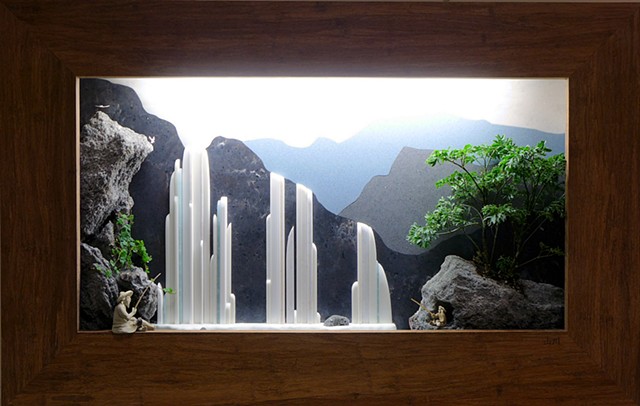Wallscapes
Chinese landscape painting developed and flourished in the Tang and Song dynasties (618 -1279 AD).* This traditional art form endured through the centuries and was revitalized amid the changing social and cultural climates in China during the later 19th and early 20th centuries.**
This shadowbox composition uses Corian fragments in a 3-D interpretation of painting techniques employed by traditional and modern Chinese artists to depict panoramas of real and imaginary settings. In addition, rough-hewn stone, miniature figurines, and live plants create a dramatic foreground, leading the eye into the traditional composition of waterfalls and slopes in the far distance.
A frame of unfinished strand bamboo surrounds the composition. A recessed fluorescent grow lamp accentuates the surface textures and facilitates plant growth, allowing this composition to be located on any wall, irrespective of available sunlight.
* Lee. S. E. (2003 ). A History of Far Eastern Art, 5th Edition. Prentice-Hall. p. 302.
** Sullivan, M. (1996). Art and Artists of Twentieth-Century China. University of California Press. p. 24.
